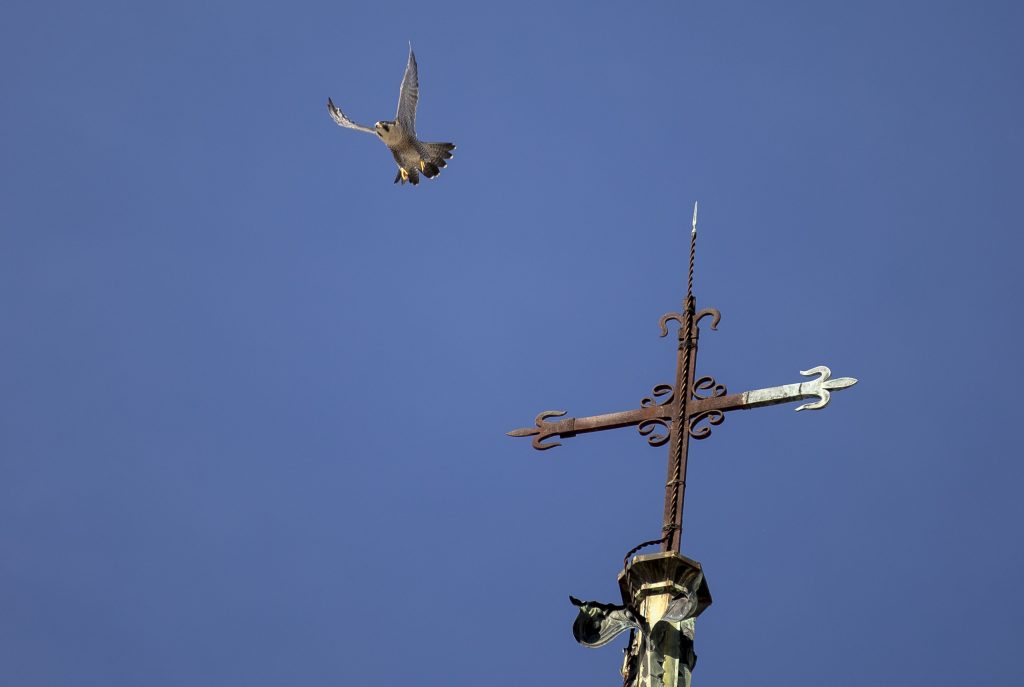It’s been nearly a year since the H5N1 bird flu was found to be infecting cows in the United States, and shortly after, humans who were in close contact with those animals.
Since then, scientists in San Antonio have been at the forefront of working with others around the world to track and study a virus that some experts have warned has the potential to become the next pandemic.
According to the U.S. Centers for Disease Control and Prevention, the current public health risk of bird flu is low and there haven’t been any known cases of person-to-person spread.
Luis Martinez-Sobrido’s biosafety level-3 laboratory at Texas Biomedical Research Institute is a member of the Centers of Excellence for Influenza Research and Response Network funded by the National Institute of Allergy and Infectious Diseases. This network of labs and scientists study the natural history, transmission and pathogenesis of influenza to address outbreaks.
Bird flu has been spreading rapidly in chickens and other fowl in recent years, Martinez-Sobrido said. The Texas Parks and Wildlife Department said on Feb. 12 that the virus was detected in multiple black vultures recovered at Landa Park in New Braunfels, and the San Antonio Zoo promptly announced it was taking precautions to protect the birds in its care.
Last year, on March 25, the virus was detected in dairy cows and their milk.
It’s that jump in the genetic chasm from bird to mammal, and more recently to people, that concerns scientists and public health experts.
Vaccines
Martinez-Sobrido has been studying influenza for 25 years, the last five at Texas Biomed.
He joined the nonprofit in February 2020 and quickly pivoted to studying SARS-CoV-2, the highly transmissible virus known as COVID-19, which forced the world into lockdown and surpassed 400,000 deaths in the U.S. that first year.
Martinez-Sobrido’s work is funded by the National Institutes of Health, which hosts weekly meetings with other H5N1 avian flu researchers and the American Lung Association.
“We’ve been following since last spring this recent outbreak of H5N1 in cows that has not been seen before,” Martinez-Sobrido said. “Until recently, this virus has mainly affected poultry … with occasional infection in humans.”
Then, last year, the virus was detected in cows for the first time — and in humans who had direct contact with infected cows and their milk, mainly dairy workers. In recent weeks, several cases have been tied to infections that did not involve cattle, but skipped from bird to human.
Also, antivirals and vaccines for bird flu have already been developed to boost immunity against the disease — and they’ve been proven to work in preventing severe illness. “The bad news is that the number of cases, unfortunately, is increasing,” Martinez-Sobrido said.
Martinez-Sobrido and other researchers are particularly concerned about how rapidly the virus is mutating. In other words, a virus that was once only found in birds is becoming better at adapting to and infecting mammals.
His lab’s research, which was recently published in the journal, “Emerging Microbes & Infections,” showed that one of the earliest strains of bird flu isolated from a human in Texas had a unique set of mutations.
“There are nine mutations in the human strain that were not present in the bovine strain, which suggests they occurred after human infection,” Martinez-Sobrido said.
Those mutations are enabling the virus to more easily replicate in human cells, and cause more severe disease in mice, compared to the strain found in dairy cattle.
The number of mutations the virus needs to jump from one mammal, such as a cow, to another, like a human, is much shorter than what it would have required to jump from a bird species to a mammal species, Martinez-Sobrido said.
It is so far unknown how fast the virus could mutate for human-to-human transmission.
Scientists already know that a single mutation can be sufficient for the virus to make the switch, infecting, replicating and transmitting efficiently in mammals. But they don’t know how long it will take for that to occur.
“We might be a few mutations away from the virus being able to infect and transmit in humans,” he said.
Because the population has not previously been exposed to avian flu, as is the case with other influenza strains, the virus could be much more fatal for humans than those other viruses.
The mortality rate of the virus is 50%, meaning it is fatal for half of the people who are infected. By comparison, COVID had a 2% mortality rate.
“If we get infected with this H5N1 virus, we don’t have any persistent immunity based on previous infections or vaccinations that protect us against this new virus,” Martinez-Sobrido said.
Infections
People infected with bird flu tend to experience mild symptoms similar to other respiratory diseases, including fever and cough, but also eye redness and hemorrhaging.
In cows, it can go undetected.
In the U.S., there have been 70 confirmed human cases of bird flu infections as of Feb. 21, and one death, a Louisiana man with underlying health conditions who died in January, according to the CDC.
But surveillance and testing are very limited, even among poultry and dairy farm workers, Martinez-Sobrido said, monitoring which health experts warn is necessary to contain any outbreak.
Those workers are being encouraged by organizations like the National Center for Farmworker Health to get vaccinated against the seasonal flu. The vaccine is not effective against H5N1, but when workers are up-to-date on the flu vaccine, it can help to minimize the occurrence of avian flu mutations.
“But if a person infected with H5N1 is also infected with a seasonal influenza virus, the virus can recombine between the H5N1 and the seasonal virus and come out with a constellation of genes that allows the [bird flu] virus now to efficiently replicate and transmit between humans,” Martinez-Sobrido said.
That’s why the public needs to realize that vaccines work to prevent widespread viral infections, he said.
Texas Biomed is also now exploring human H5N1 to determine which mutations are responsible for causing disease and symptom severity.
Martinez-Sobrido and his team want to determine what allows the virus to infect such a wide range of mammal species and why it causes mild disease in cows but is lethal in cats.
The researchers are also looking at why the infection via cows is less harmful to people than infections that originate with chickens.
Martinez-Sobrido said that to best protect people, it’s essential to manage the virus in birds and bovines before it infects humans.
“Trying to control the virus when there are infected chickens or cows will be the best way to protect us from getting the virus from these other species that we work very close to,” Martinez-Sobrido said.








